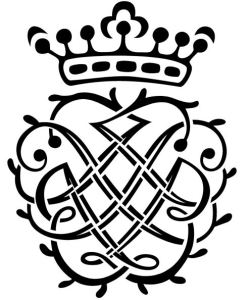Conductus 3: Music & Poetry from 13th century France
John Potter, Christopher O’Gorman, Rogers Covey-Crump
Hyperion CDA68115. 61’35
 The link between early music performance and academic musicological study has always been close, but seems to be becoming even more so with a number of recent projects stemming directly from research backed by the Arts & Humanities Research Council (AHRC). One such is the project ‘Cantum pulcriorem invenire: Thirteenth-Century Music and Poetry’, based at Southampton University, headed by Mark Everist (details here). The Cantum pulcriorem invenire (“To find a more beautiful melody”) title is, not surprisingly reduced to the more manageable CPI. As well as three recordings and related live concerts, there is an on-line database, and Mark Everist has also published a monograph ‘Discovering Song: Thirteenth-Century Latin Poetry and Music’ through Cambridge University Press.
The link between early music performance and academic musicological study has always been close, but seems to be becoming even more so with a number of recent projects stemming directly from research backed by the Arts & Humanities Research Council (AHRC). One such is the project ‘Cantum pulcriorem invenire: Thirteenth-Century Music and Poetry’, based at Southampton University, headed by Mark Everist (details here). The Cantum pulcriorem invenire (“To find a more beautiful melody”) title is, not surprisingly reduced to the more manageable CPI. As well as three recordings and related live concerts, there is an on-line database, and Mark Everist has also published a monograph ‘Discovering Song: Thirteenth-Century Latin Poetry and Music’ through Cambridge University Press.
This is the third CD to have come from this project, which explores the world of the conductus in 13th century France – arguably the “first consistent repertory of newly-composed polyphony in the history of music”. In contrast with mediaeval motets and organum, the conductus has been comparatively overlooked, perhaps because of the difficulty in working out how to actually perform it – and when it would have been performed. Usually associated with processionals, the term could equally refer to the word ‘conduct’. Typically, a conductus, is rhythmic (hence the possible association with processions) vocal pieces for one, two or three voices, and is usually sung note-against-note (syllabic), with comparatively few melismas. That said, many of the examples on this recording do include melismas, for example on tracks 7 and 8, Transgressus legem Domini and Sede, Syon in pulvere.
 The detailed notes provide informative descriptions of the musical style and individual pieces, perhaps aimed more at the musicologist than the lay listener who has to cope with words like cauda, musica cum littera, and rithmus. But the joy of this music is how approachable it is to the lay listener. You don’t need to know anything about the background or context, or the depth of research that has gone into it (producing, apparently, three PhD’s) to just enjoy the sound that it makes. And that sound is particularly attractive coming from tenors John Potter, Christopher O’Gorman and Rogers Covey-Crump who, separately and together, produce a well-modulated and exquisitely toned sound. It is quite a thought that much of this music is being heard for the first time in around 750 years.
The detailed notes provide informative descriptions of the musical style and individual pieces, perhaps aimed more at the musicologist than the lay listener who has to cope with words like cauda, musica cum littera, and rithmus. But the joy of this music is how approachable it is to the lay listener. You don’t need to know anything about the background or context, or the depth of research that has gone into it (producing, apparently, three PhD’s) to just enjoy the sound that it makes. And that sound is particularly attractive coming from tenors John Potter, Christopher O’Gorman and Rogers Covey-Crump who, separately and together, produce a well-modulated and exquisitely toned sound. It is quite a thought that much of this music is being heard for the first time in around 750 years.
Like the much later recitative style of the Baroque, the text is core to the interpretation of this music. It is essentially declaimed poetry and, as the programme note explain, leads to occasions when in musically repeated verses, the text suggest a different stress or rhythmical emphasis, depending on the words and mood of each verse.
A ‘mini-taster’ can be found here. The programme and complete CD notes can be found here.
